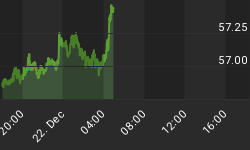Well, It Depends On If You Believe What the Government Tells You or Whether You're An Indendent Thinker
A quick summary of mainstream American news broadcasting shows a bright green light toward economic growth as the "Great Recession" finally disappears in the metaphorical rearview mirror. A variety of shapes and letters have been used to describe the path of the economic recovery, most famously, the "V shaped" return of American output. A quick look at data from the 2010 1st quarter Gross Domestic Product report released by the Bureau of Economic Analysis on April 30th reveals the following:
-
GDP grew at a 3.2% annual rate, as compared to 5.6% in Q4 2009. As forecast by Roubini et. al., GDP growth rate would collapse once the effect of stimulus measures wore off. I have claimed that the structural changes needed to effect true insurance against an economic relapse borne from financial contagion were never enacted, hence we never fixed the problem that caused the first crisis, leaving open the possibility for a another crisis in the very near future.
-
Personal Consumption Expenditures increasing at a 3.6% rate, with non-durable goods purchases climbing to 11.3%
-
Personal Savings declined from 3.9% to 3.1% (even as personal disposable income increased by $41.7 billion in comparison to $94.4 billion in Q1 2009). This gives a very likely source of the spending boost.
-
Motor vehicle output contributed to 15% of the total increase in Real GDP (.52% of the 3.2% annual rate)
An initial take away from the data is that the American consumer is alive and kicking after almost two years in the gutter. However, a look back into the makeup of US growth from 2006 shows a different style of consumer makes the recovery more of a question than a definitive event. In regards to 2006, data from the BEA release last Friday extends back to Q2 2006 on a quarterly basis. During a one year period spanning from Q2 2006 to Q1 2007 (arguably the high of bubble mania), personal consumption expenditures contributed to the percent change in total GDP from 93% to 1700%, while its largest positive contribution to GDP in the past year has been less than 90%. In a sentence, the bubble expenditure behavior has not returned (and probably will not return in this generation), and those relying on its return to support business models and valuations (CRE, retail, manufacturing, advertising, etc.) will be sorely disappointed.

Those looking for a more conventional method of observing consumer patterns can find similar conclusions by looking at Federal Reserve data on consumer credit. Both revolving and non-revolving credit lines have decreased over the past year, indicating it is still not yet worth it to take on more debt for a tapped out American consumer. The biggest contradiction with BEA statistics that can be drawn directly from Federal Reserve data is related to automobile sales data. Even as motor vehicle output continues to climb according to the BEA, Federal Reserve data shows that interest rates on auto loans have risen each quarter since the end of Cash for Clunkers, and the average amount financed has fallen each quarter as well. Such contradicting data should raise more question marks about whether or not the consumer recovery is really out of the woods (or if it will ever leave the woods).
For those who have not yet read it, the post What We're Looking For To Go Splat! Part 2 reviews 147 retail companies whose operating margins and leverage caused us to take a second (or third) look at their ability to whether the storm. Subscribers should reference ![]() Retail Short Analysis for the four companies that made the short list and the reasons behind short-listing them.
Retail Short Analysis for the four companies that made the short list and the reasons behind short-listing them.
The previous "Splat" post (part 1) dove a little deeper into the macro perspective:
Those companies that serve and rely on these very same consumers' ability to spend are quite sensitive to the macro environment. Notice, I said the companies, not necessarily the companies' securities - at least not yet. So, what does the macro/fundamental outlook look like? Let's glance at personal consumption over the 12 years or so...

Notice that the only real recovery is in the volatile energy sector, and that is not discretionary! Automobiles, clothing, furnishing, etc. are looking yucky!
And this just in from CNBC: Spending Beats Income Gain as Consumers Tap Savings
Consumer spending increased as expected in March for a sixth straight month as consumers dipped into their savings, confirming the robust spending growth.
That's some spin, eh? Consumers dip into their savings to buy things, denoting a poorer consumer that cannot subsist off of income alone. Yet, this news channel sees it fit to say that this confirms "robust spending growth". To think some people wonder why blogs are becoming more popular...















